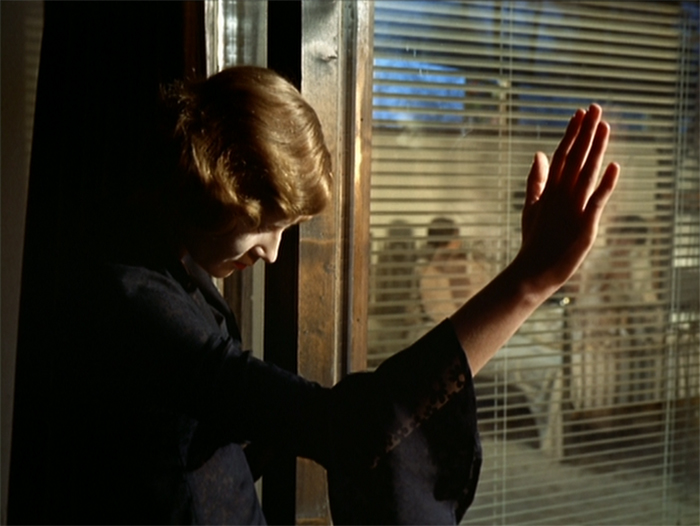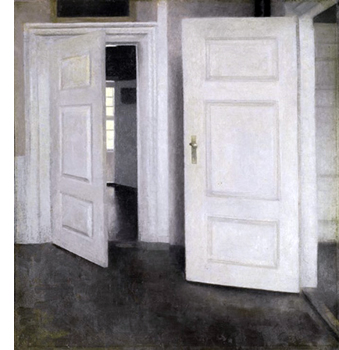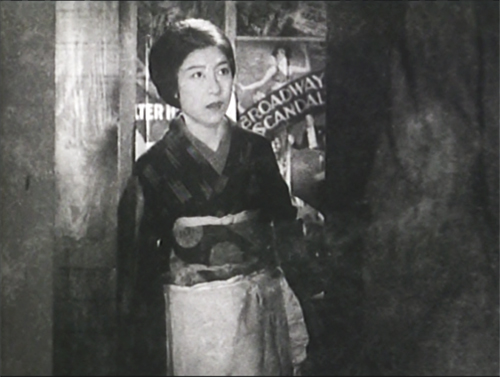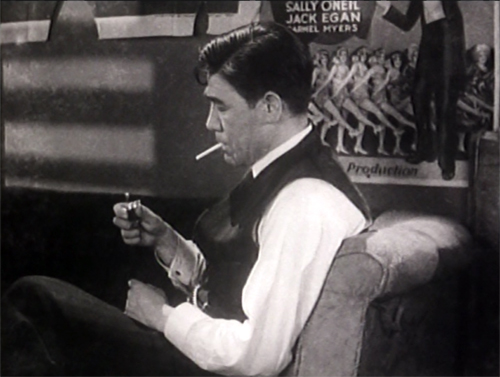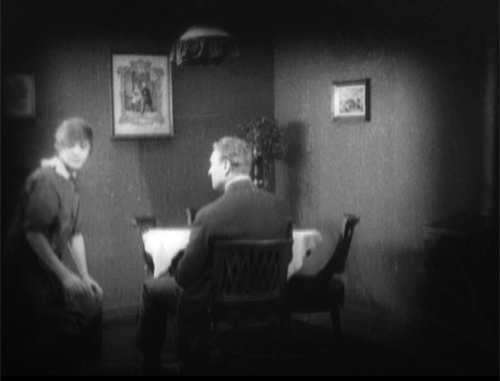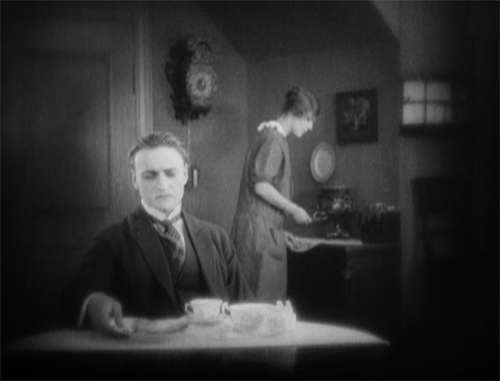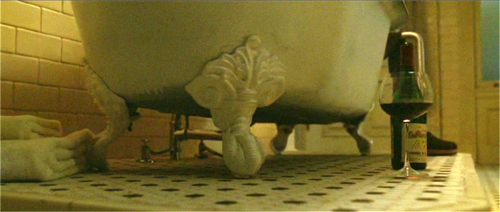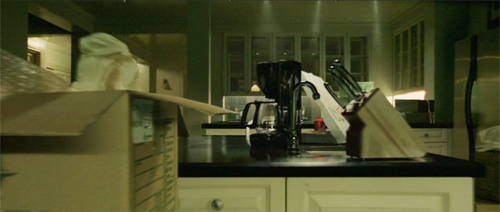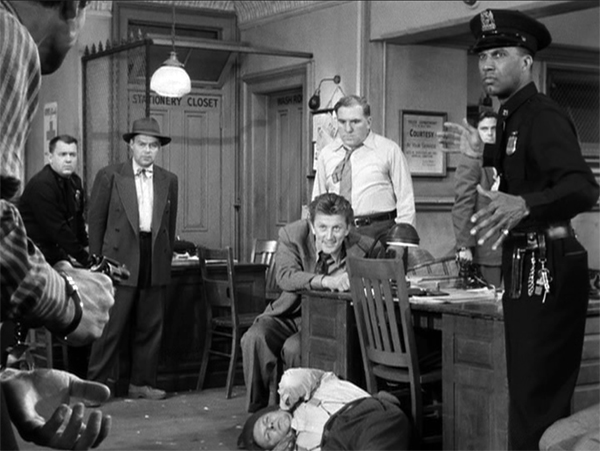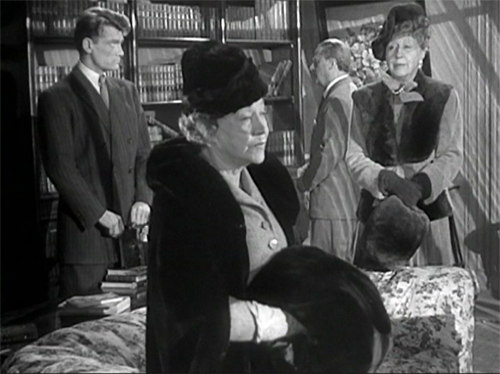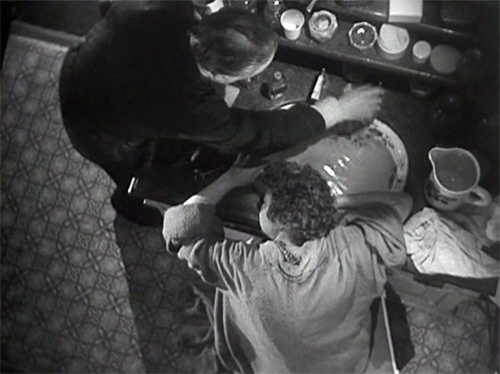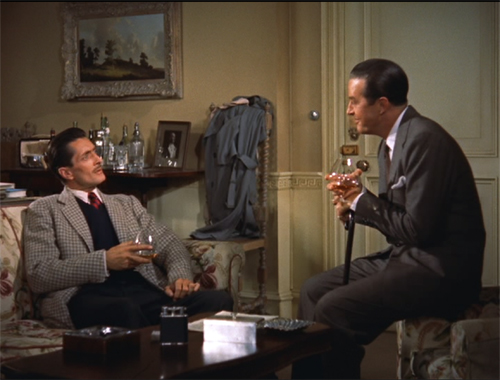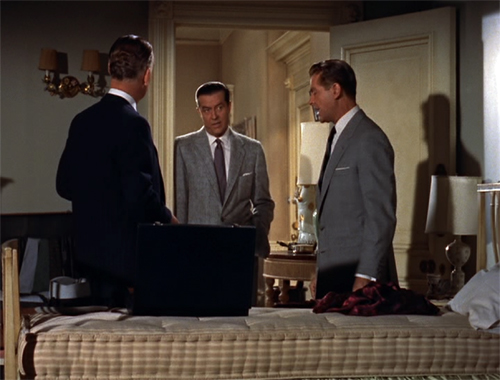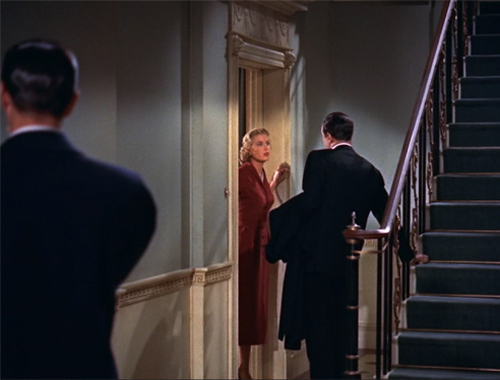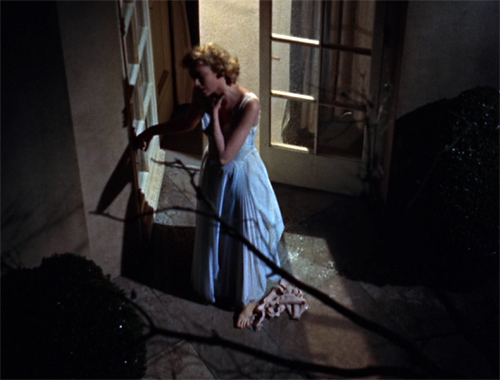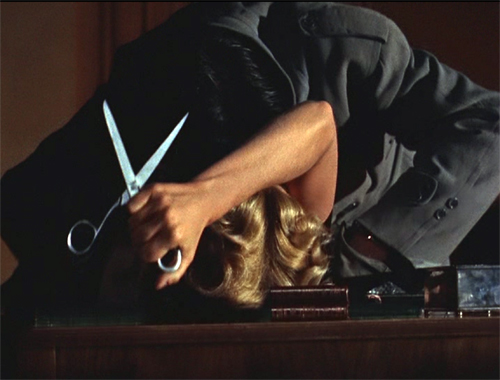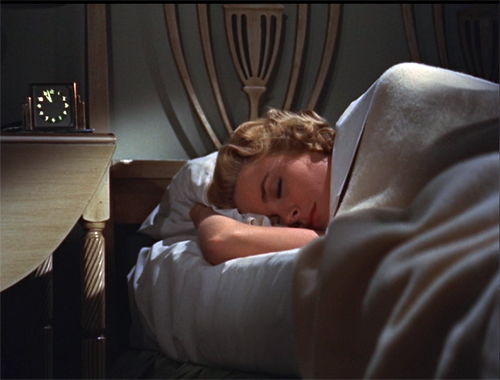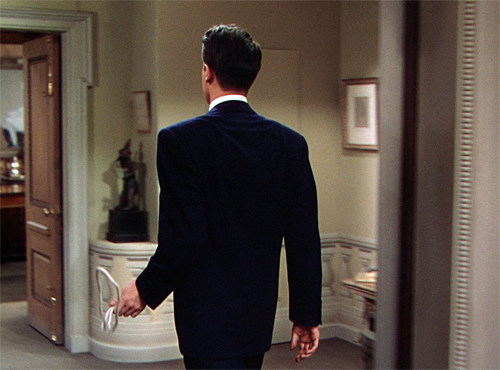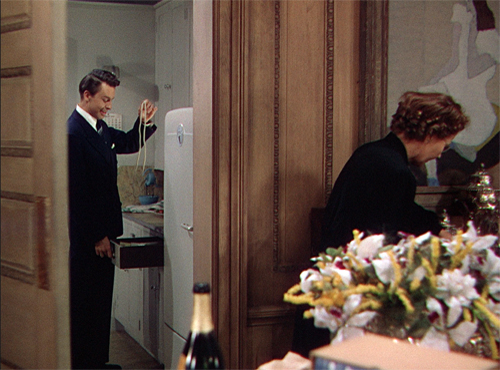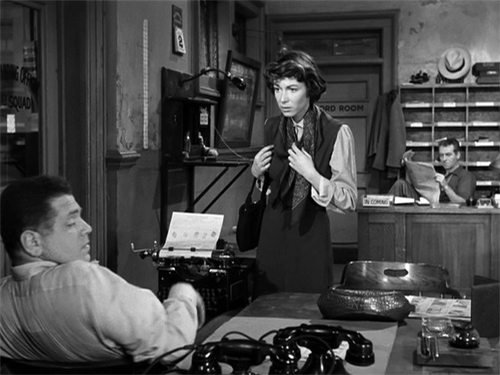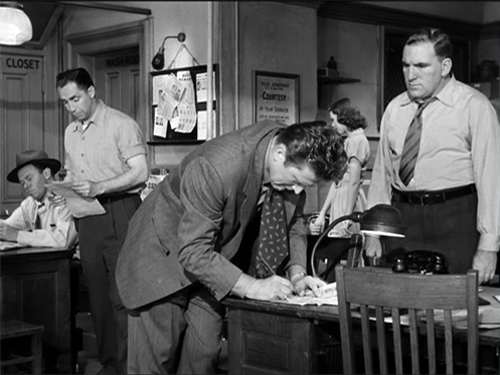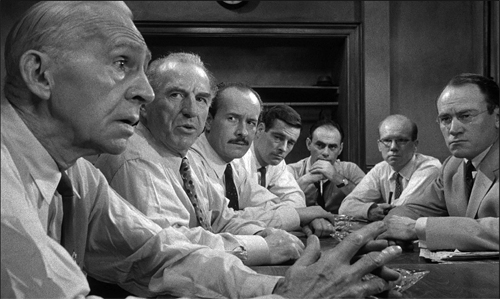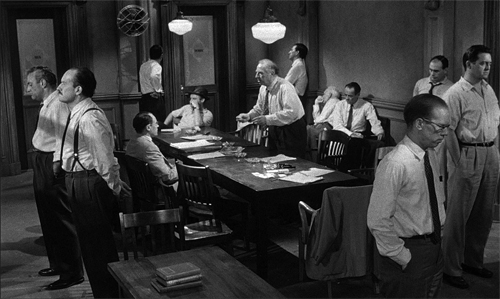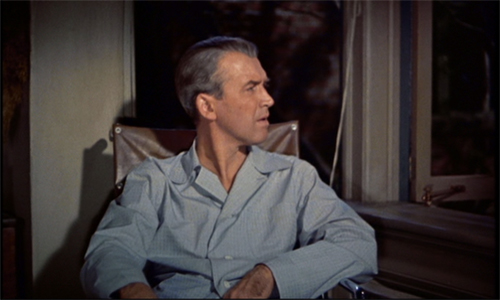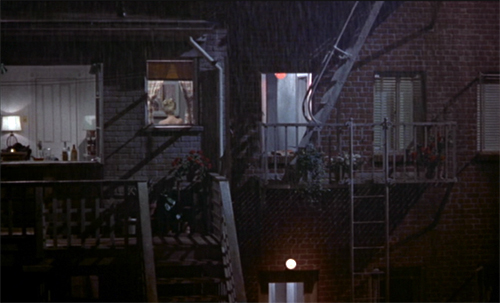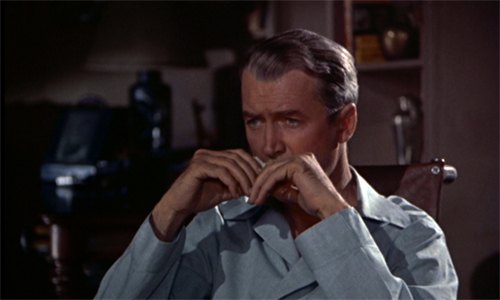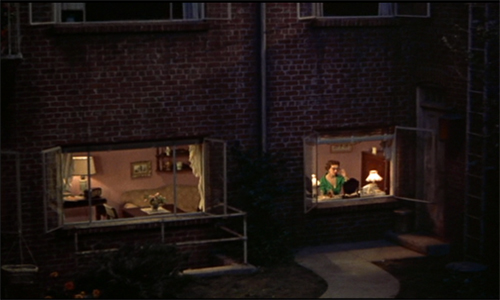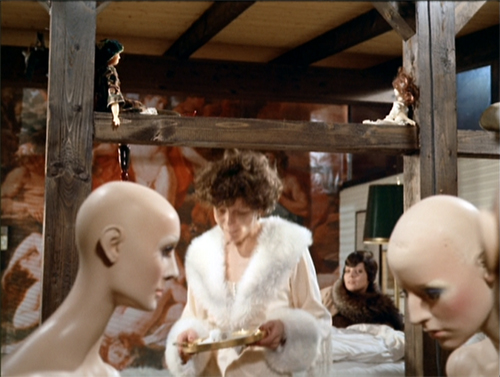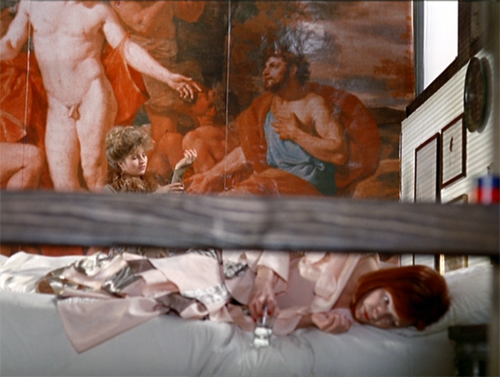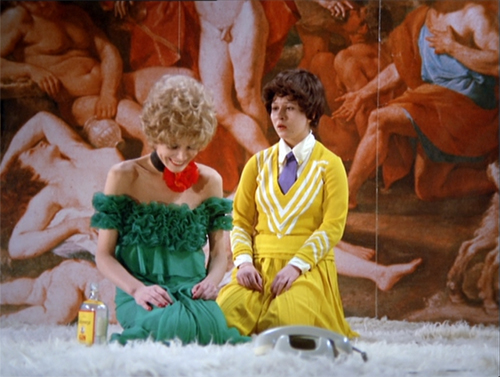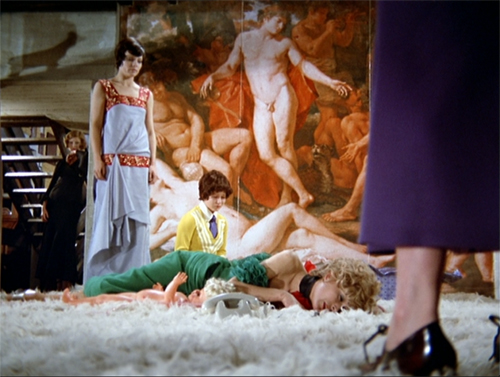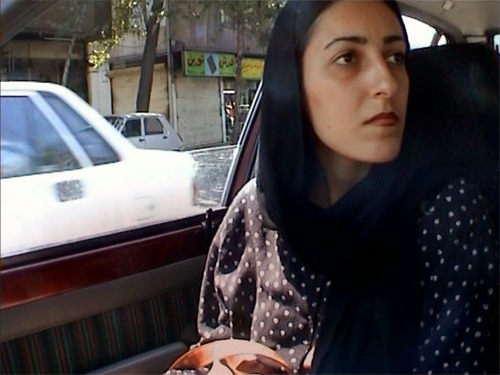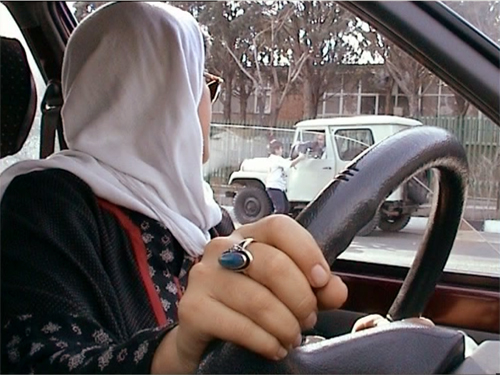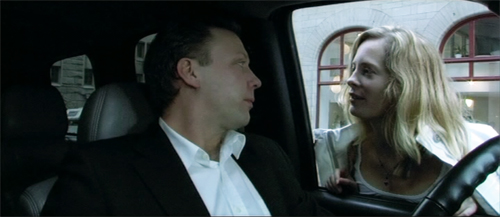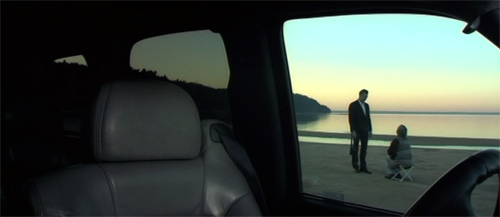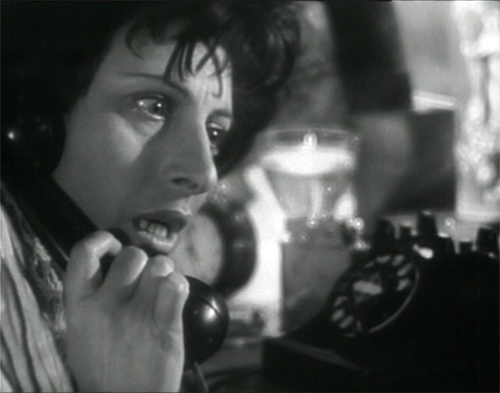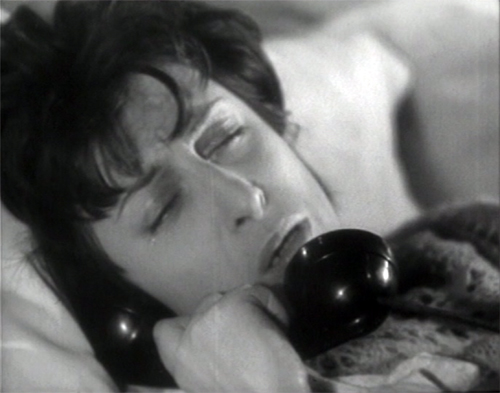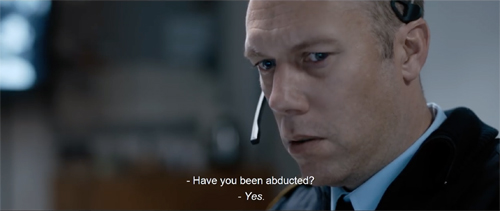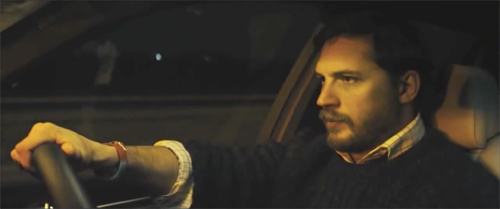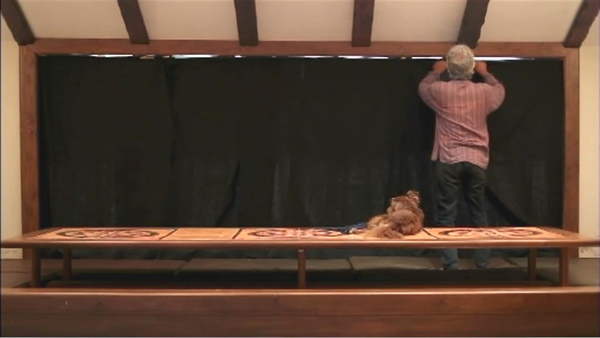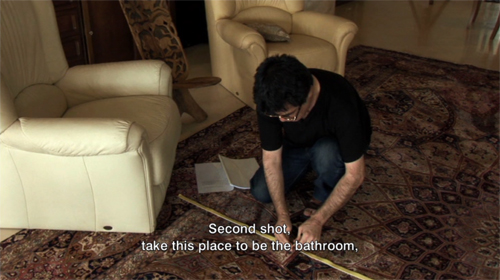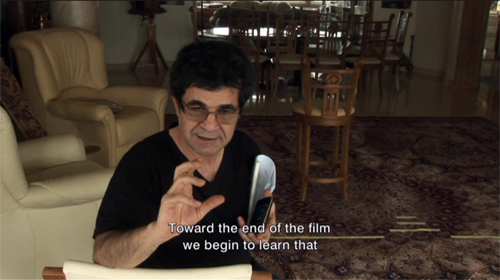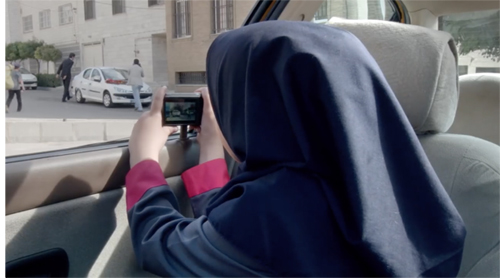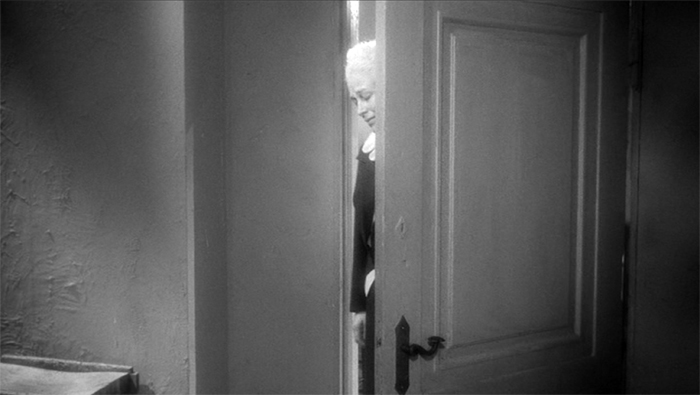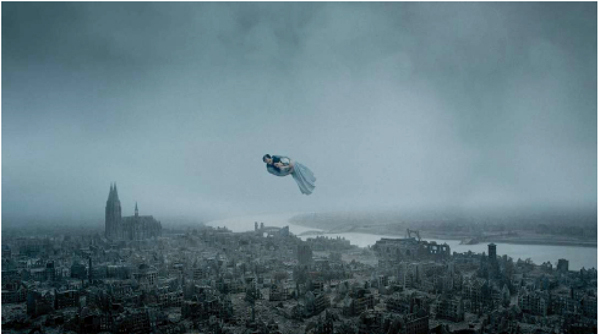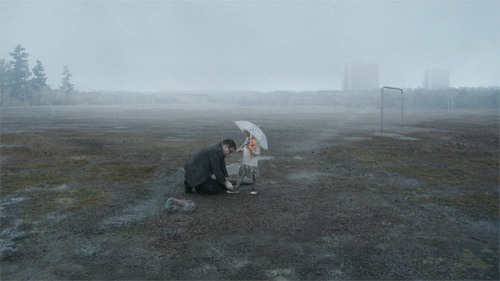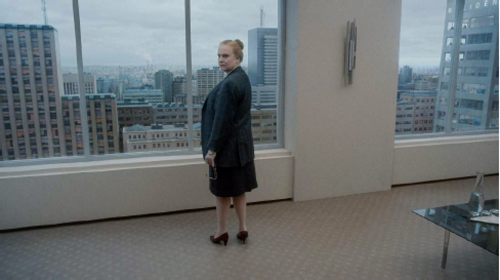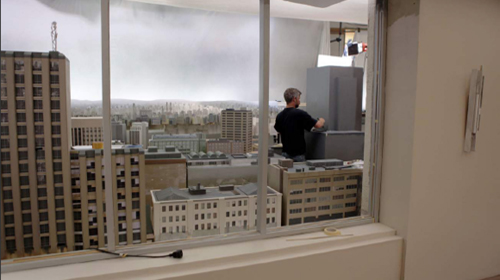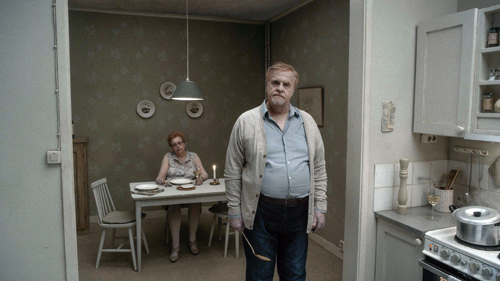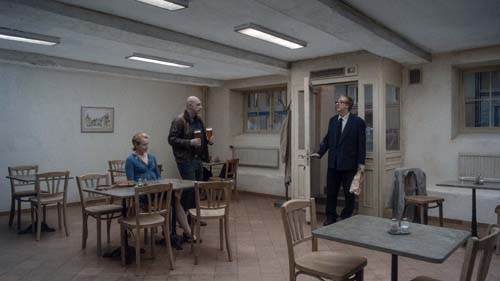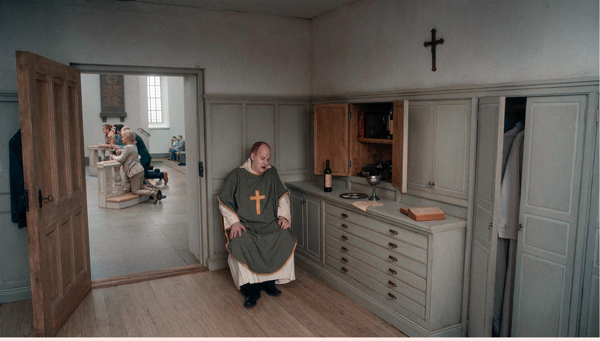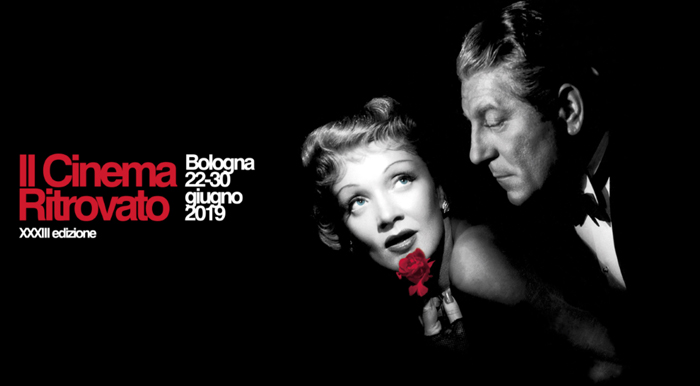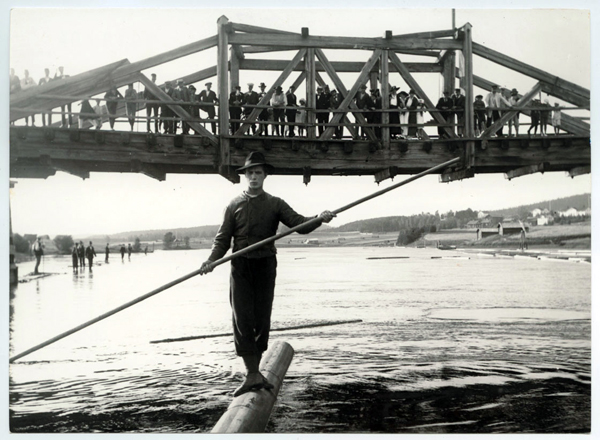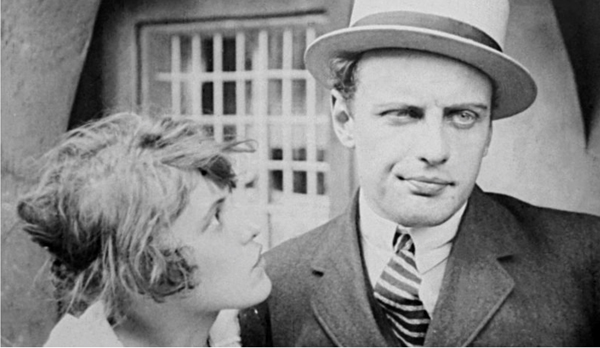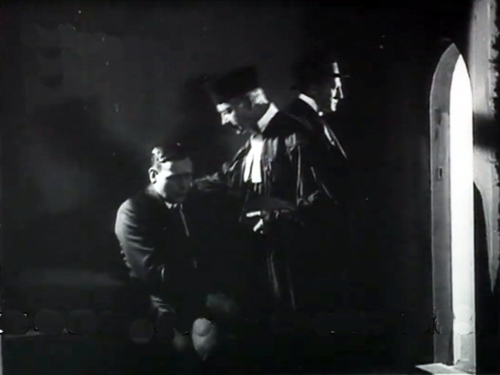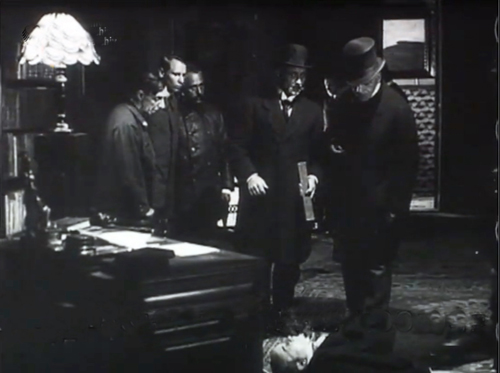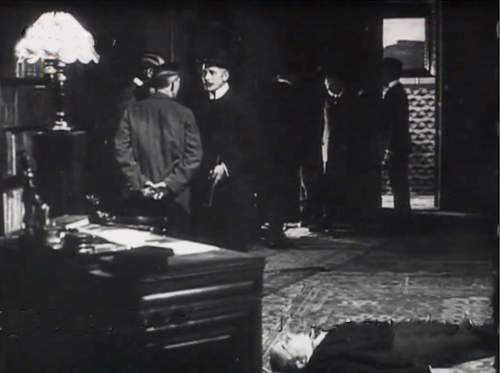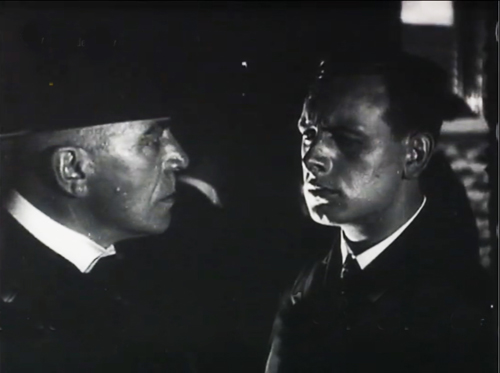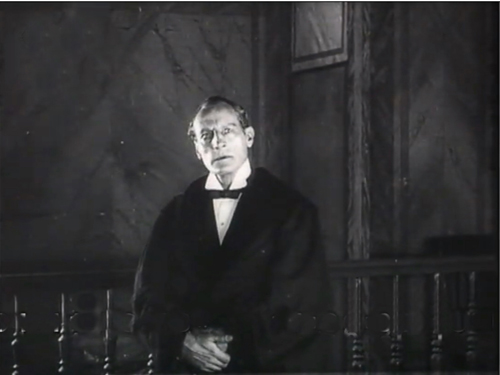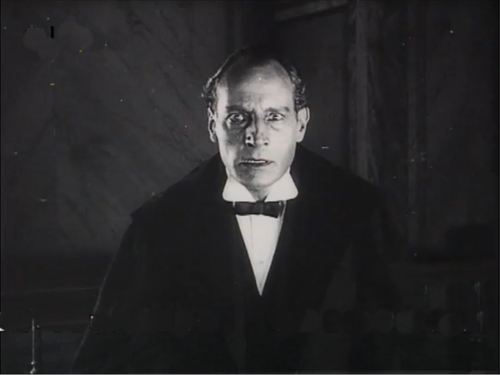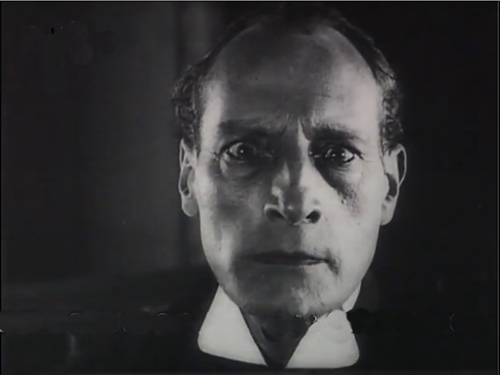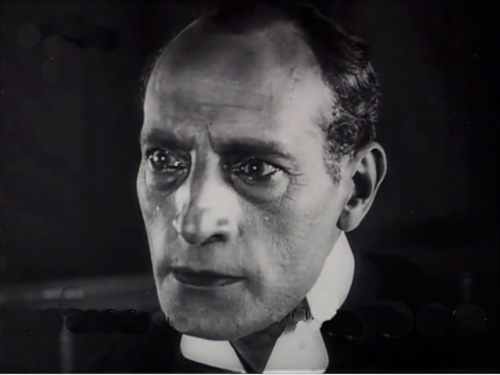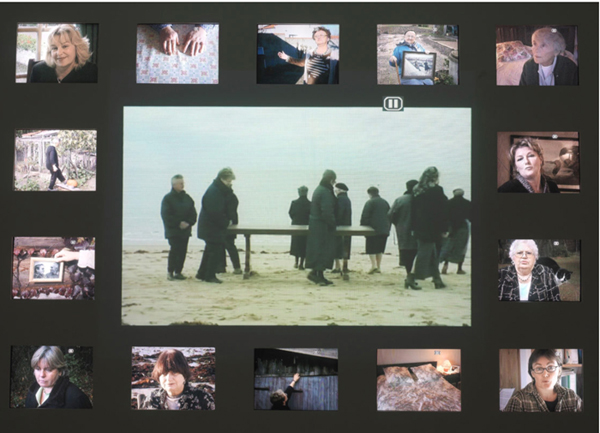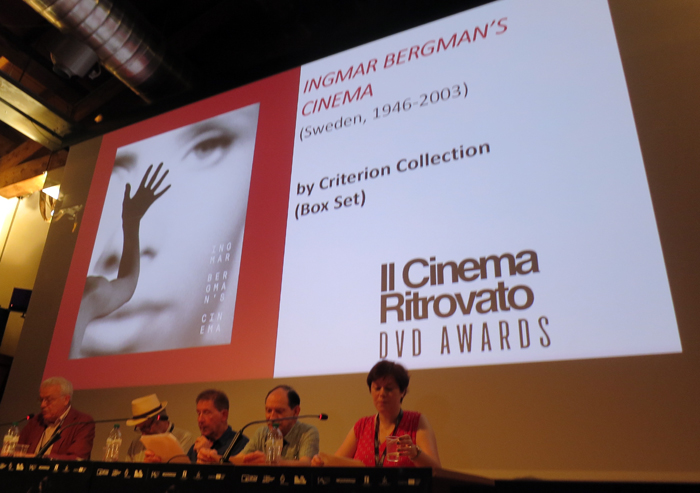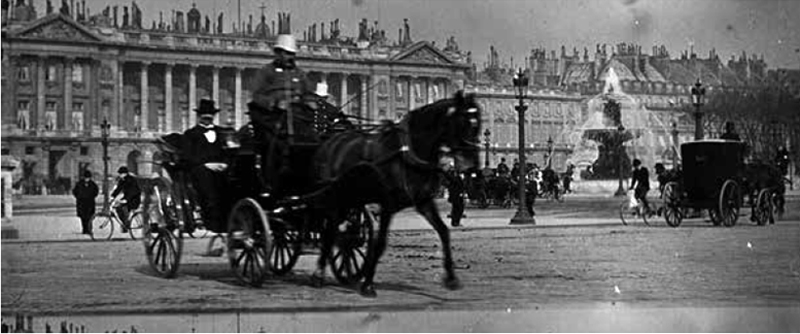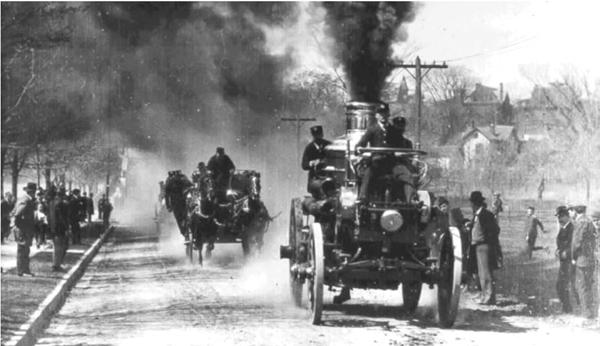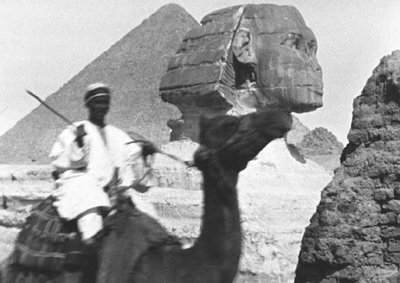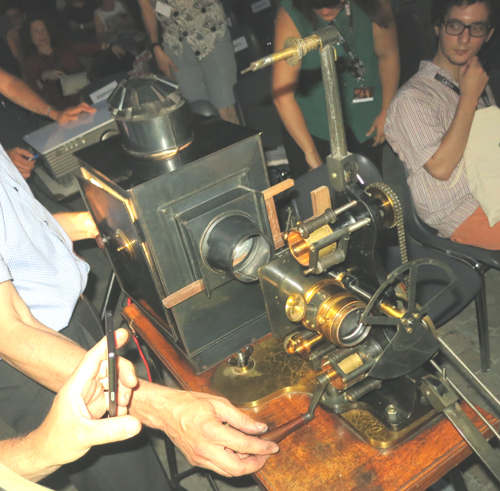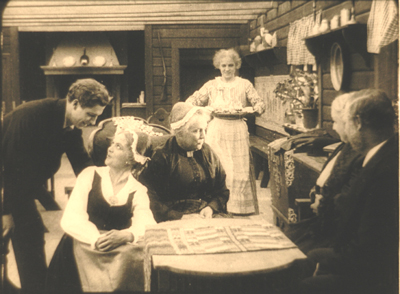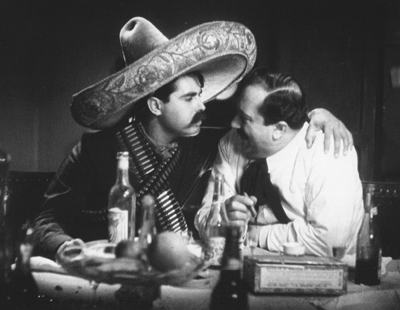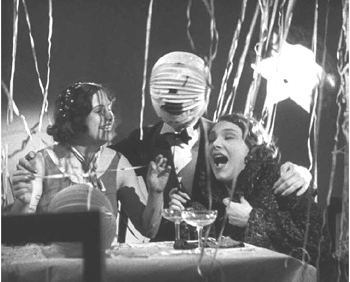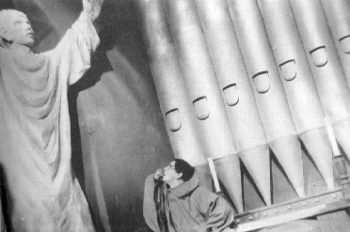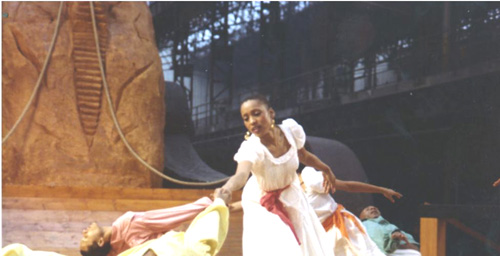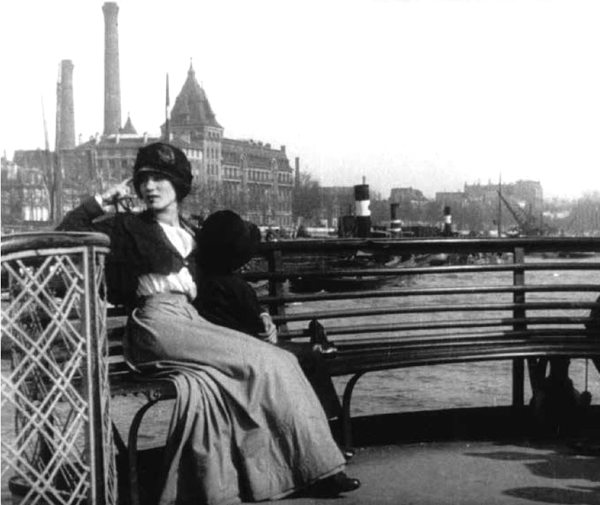Archive for the 'National cinemas: Sweden' Category
Stuck inside these four walls: Chamber cinema for a plague year
The Bitter Tears of Petra von Kant (1972).
Privacy is the seat of Contemplation, though sometimes made the recluse of Tentation… Be you in your Chambers or priuate Closets; be you retired from the eyes of men; thinke how the eyes of God are on you. Doe not say, the walls encompasse mee, darknesse o’re-shadowes mee, the Curtaine of night secures me… doe nothing priuately, which you would not doe publickly. There is no retire from the eyes of God.
Richard Brathwaite, The English Gentlewoman (1631)
DB here:
We’re in the midst of a wondrous national experiment: What will Americans do without sports? Movies come to fill the void, and websites teem with recommendations for lockdown viewing. Among them are movies about pandemics, about personal relationships, and of course about all those vistas, urban or rural, that we can no longer visit in person. (“Craving Wide Open Spaces? Watch a Western.”)
Cinema loves to span spaces. Filmmakers have long celebrated the medium’s power to take us anywhere. So it’s natural, in a time of enforced hermitage, for people to long for Westerns, sword and sandal epics, and other genres that evoke grandeur.
But we’re now forced to pay more attention to more scaled-down surroundings. We’re scrutinizing our rooms and corridors and closets. We’re scrubbing the surfaces we bustle past every day. This new alertness to our immediate surroundings may sensitize us to a kind of cinema turned resolutely inward.
Long ago, when I was writing a book on Carl Dreyer, I was struck by a cross-media tradition that explored what you could express through purified interiors. I called it “chamber art.” In Western painting you can trace it back to Dutch genre works (supremely, Vermeer). It persisted through centuries, notably in Dreyer’s countryman Vilhelm Hammershøi (below).
Plays were often set in single rooms, of course, but the confinement was made especially salient by Strindberg, who even designed an intimate auditorium. For cinema, the major development was the Kammerspielfilm, as exemplified in Hintertreppe (1921), Scherben (1921), Sylvester (1924), and other silent German classics. Kristin and I talk about this trend here and here.
In the book I argued that Dreyer developed a “chamber cinema,” in piecemeal form, in his first features before eventually committing to it in Mikael (1924) and The Master of the House (1925). Two People (1945) is the purest case in the Dreyer oeuvre: A couple faces a crisis in their marriage over the course of a few hours in their apartment. (Unfortunately, it doesn’t seem available with English subtitles.) But you can see, thanks to Criterion, how spatial dynamics formed a powerful premise of his later masterpieces Vampyr (1932), Day of Wrath (1943), Ordet (1955), and Gertrud (1964).
Dreyer wasn’t alone. Ozu tried out the format in That Night’s Wife (1930), swaddling a husband, wife, child, and detective in a clutter of dripping laundry and American movie posters.
Bergman exploited the premise too, in films like Brink of Life (1958), Waiting Women (1952), his 1961-1963 trilogy, and Persona (1966). (All can be streamed on Criterion.)
Chamber cinema became an important, if rare expressive option for many filmmaking traditions. Writers and directors set themselves a crisp problem–how to tell a story under such constraints?
The challenge is finding “infinite riches in a little room.” How? Well, you can exploit the spatial restrictiveness by confining us to what the inhabitants of the space know. Limiting story information can build curiosity, suspense, and surprise. You can also create a kind of mundane superrealism that charges everyday objects with new force.
On the other hand, you need to maintain variety by strategies of drama and stylistic handling. Chamber cinema–wherever it turns up–offers some unique filmic effects, and maybe sheltering in place is a good time to sample it.
Herewith a by no means comprehensive list of some interesting cinematic chamber pieces. For each title, I link to streaming services supplying it.
Bottles of different sizes
From David Koepp I learned that screenwriters call confined-space movies “bottle” plots. There’s a tacit rule: The audience understands that by and large the action won’t stray from a single defined interior. In a commentary track for the “Blowback” episode of the (excellent) TV show Justified, Graham Yost and Ben Cavell discuss how TV series plan an occasional bottle episode, and not just because it affords dramatic concentration. It can save time and money in production.
Usually the bottle consists of more than a single room. The classic Kammerspielfilms roam a bit within a household and sometimes stray outdoors. But their manner of shooting provides a variety of angles that suggest continuing confinement. Dreyer went further in The Master of the House. He built a more or less functioning apartment as the set, then installed wild walls that let him flank the action from any side. Then editing could provide a sense of wraparound space.
The variations in camera setups throughout the film are extraordinary. Dreyer would create more radically fragmentary chamber spaces in La Passion de Jeanne d’Arc (1928), while his later films would use solemn, arcing camera movements to achieve a smoother immersive effect. (For more on Dreyer’s unique spatial experimentation, here’s a link to my Criterion contribution on Master of the House. I talk about the tricks Dreyer plays with chamber space in Vampyr in an “Observations” supplement on the Criterion Channel.)
Likewise, Koepp’s screenplay for Panic Room allows David Fincher to move 360 degrees through several areas of a Manhattan brownstone. The film also offers a fine example of how our awareness of domestic details gets sharpened by a creeping camera.
Trust Fincher to find sinister possibilities in a dripping bathtub leg and a kitchen island.
Confined to quarters
Detective Story (1951).
Many chamber movies are based on plays, as you’d expect. Unlike most adaptations, though, they don’t try to “ventilate” the play by expanding the field of action. Or rather, as André Bazin pointed out, the expansion is itself fairly rigorous. They don’t go as far afield as they might.
Bazin praised Cocteau’s 1948 version of his play Les parents terribles (aka “The Storm Within”) for opening up the stage version only a little, expanding beyond a single room to encompass other areas of the apartment. This retained the claustrophobia, and the sense of theatrical artifice, but it spread action out in a way that suited cinema’s urge to push beyond the frame. The freedom of staging and camera placement is thoroughly “cinematic” within the “theatrical” premise.
Depending on how you count, Hitchcock expanded things a bit in his adaptation of Dial M for Murder. Apart from cutting away to Tony at his club, Hitchcock moved beyond the parlor to the adjacent bedroom, the building’s entryway, and the terrace.
An earlier entry on this site talks about how 3D let Sir Alfred give an ominous accent to props: a particularly large pair of scissors, and a more minor item like the bedside clock.
Hitchcock gave us a parlor and a hallway in Rope (1948), but when Brandon flourishes the murder weapon, the framing audaciously reminds us that we aren’t allowed to go into the kitchen.
Bazin did not wholly admire William Wyler’s Detective Story (1951), despite its skill in editing and performances; he found it too obedient to a mediocre play. True, the film doesn’t creatively transform its source to the degree that Wyler’s earlier adaptation of The Little Foxes (1941) did; Bazin wrote a penetrating analysis of that film’s remarkable turning point. Detective Story is more obedient to the classic unities, confining nearly all of the action to the precinct station. Although I don’t think Wyler ever shows the missing fourth wall, he creates a dazzling array of spatial variants by layering and spreading out zones of the room. In his prime, the man could stage anything fluently.
As Bazin puts it: “One has to admire the unequaled mastery of the mise-en-scène, the extraordinary exactness of its details, the dexterity with which Wyler interweaves the secondary story lines into the main action, sustaining and stressing each without ever losing the thread.”
Some films are even more constrained. 12 Angry Men (1957), adapted from a teleplay, is a famous example. Once the jury leaves the courtroom, the bulk of the film drills down on their deliberation. Again, the director wrings stylistic variations out of the situation; Lumet claims he systematically ran across a spectrum of lens lengths as the drama developed.
But you don’t need a theatrical alibi to draw tight boundaries around the action. Rear Window (1954), adapted from a fairly daring Cornell Woolrich short story, is as rigorous an instance of chamber cinema as Rope. Here Hitchcock firmly anchors us in an apartment, but he uses optical POV to “open out” the private space.
With all its apertures the courtyard view becomes a sinister/comic/melancholy Advent calendar.
Fassbinder’s Bitter Tears of Petra von Kant (1972) denies us this wide vantage point on the outside world. This space seems almost completely enclosed. But Fassbinder finds a remarkable number of ways to vary the set, the camera angles, and the costumes. We’re immersed in the flamboyant flotsam of several women’s lives. The result is a cascade of goofily decadent pictorial splendors.
It’s virtually a convention of these films to include a few shots not tied to the interiors. At the end, we often get a sense of release when finally the characters move outside. That happens in 12 Angry Men, in Panic Room, in Polanski’s Carnage (2011) , and many of my other examples. Without offering too many spoilers, let’s say Room (2015) makes architectural use of this option.
On the road and on the line
Filmmakers have willingly extended the bottle concept to cars. The most famous example is probably Kiarostami’s Ten (2002), which secures each scene in a vehicle and mixes and matches the passengers across episodes. The strictness of Kiarostami’s camera setups exploit the square video frame and always yield angular shot/reverse shots. They reveal how crisp depth relations can be activated through the passing landscape or in story elements that show up in through the window.
Perhaps Kiarstami’s example inspired Danish-Swedish filmmaker Simon Staho. His Day and Night (2004) traces a man visiting key people on the last day of his life, and we are stuck obstinately in the car throughout. This provides some nifty restriction, most radically when we have to peer at action taking place outside.
Staho’s Bang Bang Orangutang (2005), a portrait of a seething racist, takes up the same premise but isn’t quite so rigorous. We do get out a bit, but the camera stays pretty close to the car. I discuss Staho’s films a little in a very old entry.
Like autos, telephones provide a nice motivation for the bottle, as Lucille Fletcher discovered when she wrote the perennial radio hit, “Sorry, Wrong Number.” The plot consists of a series of calls placed by the bedridden woman, who overhears a murder plot. The film wasn’t quite so stringently limited, but the effect is of the protagonist at the center of several crisscrossed intrigues.
A purer case is the Rossellini film Una voce umana (1948), in which a desperate woman frantically talks with her lover. It relies on intense close-ups of its one player, Anna Magnani.
It’s an adaptation of a Cocteau play, which Poulenc turned into a one-act opera. In all, the duration of the story action is the same as the running time.
I wish Larry Cohen’s Phone Booth displayed a similarly obsessive concentration, but we do have the Danish thriller The Guilty, where a police dispatcher gets involved in more than one ongoing crime. We enjoyed seeing it at the 2018 Wisconsin Film Festival.
And of course car and phone can be combined, as they are in Locke (2013)–another play adaptation. Tom Hardy plays a spookily calm businessman driving to a deal while taking calls from his family and his distraught mistress. Those characters remain voices on the line while he tries to contend with the pressures of his mistakes.
House arrest, arresting houses
Sometimes you must embrace the chamber aesthetic. In 2010 the fine Iranian director Jafar Panahi was forbidden to make films and subjected to house arrest. Yet he continued to produce–well, what? This Is Not a Film (2012) was shot partially on a cellphone within (mostly) his apartment.
Wittily, he tapes out a chamber space within his apartment. Then he reads a script to indicate how absent actors could play it and how an imaginary camera could shoot it.
But his imaginary film still isn’t an actual film, so he hasn’t violated the ban. So perhaps what we have is rather a memoir, or a diary, or a home video? Panahi’s virtual film (that isn’t a film) exists within another film that isn’t a film. Yet it played festivals and circulates on disc and streaming. The absurdity, at once touching and pointed, suggests that through playful imagination, the artist can challenge censorship.
Panahi slyly pushed against the boundaries again with Closed Curtain (2013, above). Shot in his beach house, it strays occasionally outside. Next came Taxi (2015), in which Panahi took up the auto-enclosed chamber movie, with largely comic results.
More recently, he has somehow managed to make a more orthodox film, 3 Faces (2018), which considers the situation of people in a remote village.
The chamber-based premise needn’t furnish a whole movie. As in Room, Kurosawa’s High and Low (1963) is tightly concentrated in its first half. We are in two enclosures, a house and a train. The film then bursts out into a rushed, wide-ranging investigation. Large-scale or less, the chamber strategy remains a potent cinematic force.
They say that the last creatures to discover water will be fish. We move through our world taking our niche for granted. Cinema, like the other arts, can refocus our attention on weight and pattern, texture and stubborn objecthood. We can find rich rewards in glimpses, partial views, and little details. Chamber art has an intimacy that’s at once cozy and discomfiting. Seeing familiar things in intensely circumscribed ways can lift up our senses.
So take a break from the crisis and enjoy some art. But return to the world knowing that for Americans this catastrophe is the result of forty years of monstrous, gleeful Republican dismantling of our civil society. Rebuilding such a society will require the elimination of that party, and the career criminal at its head, as a political force. This pandemic must not become our Reichstag fire.
Yeah, I went there.
Thanks to the John Bennett, Pauline Lampert, Lei Lin, Thomas McPherson, Dillon Mitchell, Erica Moulton, Nathan Mulder, Kat Pan, Will Quade, Lance St. Laurent, Anthony Twaurog, David Vanden Bossche, and Zach Zahos. They’re students in my seminar, and they suggested many titles for this blog entry.
Bazin’s comments on Detective Story come in his 1952 Cannes reportage, published as items 1031-1033, and as a review (item 1180), in Écrits complets vol. I, ed. Hervé Joubert-Laurencin (Paris: Macula, 2018), pp. 918-922, 1059. My quotation comes come from the review, where he does grant that Wyler is the Hollywood filmmaker “who knows his craft best. . . . the master of the psychological film.”
The tableau style of the 1910s probably helped shift Dreyer toward the chamber model, which he learned to modify through editing. I discuss Dreyer’s relation to that style in “The Dreyer Generation” on the Danish Film Institute website. Also related is the web essay, “Nordisk and the Tableau Aesthetic.”
Some other examples could be mentioned, but I didn’t find them on streaming services in the US. It would be nifty if you could see the tricks with chamber space in Dangerous Corner (1934); fortunately it plays fairly often on TCM. There’s also Duvivier’s Marie-Octobre (1959), a tense drama about the reunion of old partisans.
I especially like the 1983 Iranian film, The Key, directed by Ebrahim Forouzesh and scripted by Kiarostami. It’s a charming, nearly wordless story of how a little boy tries to manage household crises when Mother is away. It has the gripping suspense that is characteristic of much Iranian cinema, and the boy emerges as resourceful and heroic (though kind of messy). Kids would like it, I think.
Also, I’ve neglected Asian instances. Maybe I’ll revisit this topic after a while.
P.S. 1 April 2020: Thanks to Casper Tybjerg, outstanding Dreyer scholar, for corrections about the nationality of The Guilty and the Staho films.
Gertrud (1964).
The raptures of rigor: Roy Andersson’s ABOUT ENDLESSNESS at Venice 2019
About Endlessness (Roy Andersson, 2019).
DB here:
In the midst of the frenzy of fast cutting in films of the 1990s, a few directors reminded us of the virtues of simply putting your camera on a tripod and letting the action unfold in front of it. Abbas Kiarostami, Hou Hsiao-hsien, Kitano Takeshi, Tsai Ming-liang, and several other filmmakers reminded us that the fixed camera and long take, i.e. the “theatrical” cinema so despised in the 1920s and 1930s, still harbored great expressive resources.
It’s a lesson we have to keep learning–with Warhol and Tati in the 1960s, Akerman and Duras and Angelopoulos in the 1970s, Iosseliani in the 1980s, and not least with one of the greatest exponents of the tendency, Manoel de Oliveira. His 1963 film Rite of Spring initiated his persistent, endlessly inventive exploration of the tableau shot. Doomed Love (1978; briefly discussed here) is a superb example; Francisca (1981) is another, and we were lucky to catch a superb restoration on display in the Venice Classics section. I hope to write about it soon!
After four years of production, Roy Andersson’s Songs from the Second Floor was released in 2000 and established his distinctive approach to the tableau tradition. Since then he has made only three features, the most recent of which played in competition at Venice 76. Of course we had to see it, and to visit his press conference.
This is visionary cinema of a unique kind.
Landscapes of unhappiness, minor and major
Start with some brute facts. About Endlessness runs only seventy minutes (without credits), and it consists of 32 one-shot scenes. As in Andersson’s other films since 2000, most scenes stand alone, without narrative connection to others.
Some are bare-bones situations, as when a young man watches a young woman watering a plant, or when a father ties his little girl’s shoe in a rainstorm. Others unfold a dramatic crisis. A man bursts into tears on a city bus, complaining that he doesn’t know what he wants. A dentist, put off by a patient’s yowls of pain, simply walks out of the consultation and ends up in a bar.
Some shots draw on our knowledge of a broader story, as when Hitler stalks into one chamber of his bunker and his lieutenants, exhausted by the bombardment, sporadically salute him. He hardly seems to notice. A few tableaux present a recurring thread, like minimalist running gags. A man recognizes a schoolmate, but wonders why the man won’t greet him. A priest feels himself losing his faith, gets drunk while celebrating mass, and consults a doctor for advice. And one recurring image shows a woman cradled in a man’s arms floating in the sky–at one point drifting over the ruins of the bombed Cologne of World War II.
What makes Andersson’s cinema so fascinating is his effort to design intricate, gradually unfolding compositions that harbor powerful emotional expression. Dialogue is at a minimum; objects are arranged with the precision of still lifes. His people are often doughy and plodding, with hangdog expressions and complexions like pumice, living in a world dominated by grays and pastel browns. His movies reveal how many shades of beige there can be.
The grandeur of the distant framings accentuate the impotence of the characters. These sad creatures are caught in strict, unsympathetic perspective, all sharp angles and endless vistas. They stand exposed by flat, minimally sculptured lighting. “I avoid shadows,” he explained at the press conference. “I want to make pictures where people can’t hide. A light without mercy.”
The same mercilessness is seen in the settings, which may look fairly naturalistic but are wholly artificial. Andersson uses miniatures, background painting, and digital effects to create his picture-book landscapes. Streets, cities, train platforms are all the product of years of preparation. Like Tativille in Jacques Tati’s Play Time, Andersson’s sets create a beguilingly realistic version of a wholly fake city.
The sets are calculated to make sense from a single vantage point, as Renaissance paintings are. In a shot like the first one below, moving the camera would reveal the forced-perspective buildings outside.
Some of these landscapes are as eerie as de Chirico’s, but without any of the sensuous shading.
Which means that posture, gesture, and objects near and far have to carry the drama, however anecdotal it may be. The man who thinks his old friend has snubbed him tells us that the friend has a Ph.D. His wife consoles him (after all, they’ve been to Niagara Falls), but he’s still anxious. His puzzled fretfulness is carried by his slumped bearing, his plaintive expression, and his clinging to his slotted spoon. Meanwhile we hear his pasta simmering ever more loudly in the kettle in lower frame right, a light objective correlative to his annoyance.
Andersson teases us by letting us imagine how a micro-story might unfold. In a cafe, a woman sits alone, with no drink in front of her. She’s in the classic posture of waiting, A man eats dinner behind her (his cutlery clinks) and an empty table on far right bears the traces of another customer. In comes a large, lumpish fellow brandishing a bouquet. He hesitantly asks for Lisa Larsson. So it’s a rendezvous?
Nope. A bald man enters from frame left bearing two beers.
The lady doesn’t admit to being Ms. Larsson. Maybe she really isn’t, or maybe she found a better date. In any case, the newcomer turns and leaves, a bit sadly. Of course, there’s always the possibility that the absent customer on the right was his date. We, and he, won’t know.
Note, in passing, Andersson’s use of classic staging techniques. Tableau cinema needs to guide our attention through pictorial tactics such as central placement, frontal positioning, and patterns of blocking-and-revealing. By giving the bald man a central position in the format and letting him mask our view of the man eating in the corner, Andersson makes sure we’ll register the confrontation between him and the intruder.
Most of the tableaux are accompanied by a brief voice-over, a woman saying, “I saw…” followed by a single-sentence description of the action. Andersson claims to see her as a bit like Scheherazade, but she has as little commitment to a full story as he does. Her narration provides very little judgment on the scene but does supply a bit of information–often grim, as when we learn that a busker lost his legs in combat.
Indeed, war is a recurring motif in the film, making it bleaker than any of the other Andersson films I recall. Now the minor miseries and absurdities of modern life sit along a continuum of death and destruction. A sequence of spontaneous dance here, a father’s awkward love for his daughter there–these don’t wholly compensate for a wartime execution or the bombing of Dresden. The gags are fewer now, and Andersson’s fantastical but stubbornly tangible cities have never looked more oppressive. The idea of endlessness stretches in many provocative directions: the infinite vistas of city and sky, the pinpricks of guilt and frustration in everyday life, the obscene endlessness of war. Lucky are those who can in a gentle embrace float above it all.
Andersson’s last film, A Pigeon Sat on a Branch Reflecting on Existence, won the Golden Lion for Best Film in Venice in 2014. Maybe this one will too? It’s one of the best new films I’ve seen here this year. More on the others, in later entries!
Thanks to Paolo Baratta and Alberto Barbera for another fine festival, and to Peter Cowie for his invitation to participate in the College Cinema program. We also appreciate the kind assistance of Michela Lazzarin and Jasna Zoranovich for helping us before and during our stay.
We’ve written bits on Andersson’s films elsewhere in our blog entries. See our entries on tableau staging for lots more on how this stylistic approach works. I discuss the technique as well in On the History of Film Style and Figures Traced in Light: On Cinematic Staging.
To go beyond our Venice 2019 blogs, check out our Instagram page.
About Endlessness (2019).
A hundred years ago, and less, at Cinema Ritrovato ’19
DB here:
Hundreds of films, thousands of passholders, sweltering heat (105 degrees Fahrenheit on Thursday). Dazzling tributes to Fox films, Youssef Chahine, Eduardo De Filippo, Henry King, Felix Feist, silent star Musidora, sound star Jean Gabin, and other themes. Many filmmakers from Africa, South Korea, and Europe, as well as master classes with Francis Ford Coppola and Jane Campion.
Yes, Cinema Ritrovato is on steroids this year.
And as we always say: There are so many tough, indeed impossible, choices. Kristin has been faithfully following the African series, while I’ve hopped between restored and rediscovered Hollywood classics and the films from 1919. Today I’ll report a bit on the latter, with an addendum on a major filmmaker’s ave atque vale.
1919 bounty
Song of the Scarlet Flower (1919). Production still.
By the end of the 1910s, the feature-length format had become well-established, and a bevy of directors in Europe and America were launching their careers. Abel Gance, Victor Sjöström, Mauritz Stiller, John Ford, Raoul Walsh, Cecil B. DeMille, Lois Weber, Charlie Chaplin, Douglas Fairbanks, William S. Hart, Mary Pickford, and many other figures had already made impressive work. 1919 brought us some outstanding titles. There was von Stroheim’s Blind Husbands, Griffith’s Broken Blossoms and True Heart Susie, Lubitsch’s Madame DuBarry, along with the lesser-known Victory of Maurice Tourneur, the first part of Sjöström’s Sons of Ingmar, and the overbearing, delirious Nerven of Robert Reinert.
Bologna showed none of these. Its massive 1919 lineup featured some classics in restorations, notably Capellani’s The Red Lantern (starring Nazimova), Dreyer’s debut The President, and Stiller’s Herr Arne’s Treasure. As a sidebar there was the 1919 Italian serial I Topi Grigi, a fun sub-Feuillade exercise in crooks and chases with some nifty shots. And there were a great many fragments and short films from that year, including a Hungarian entry by Mihály (Michael) Kertész (Curtiz).
Less known than Stiller’s official classics is The Song of the Scarlet Flower, a wonderful open-air drama about a young farmer’s wanderings and his heart-rending romances with three women. In a new digital version, it emerged as one of the most sheerly beautiful films I saw at Bologna. The central action sequence, in which the hero dares to ride a log through rapids to the very edge of a waterfall, gained even greater tension thanks to the swelling orchestral score by Armas Järnefelt–the only original score to be preserved for a Swedish silent.
1919, German style
Der Mädchenhirt (The Pimp, 1919). Production still.
Then there were two remarkable German films unknown to me, both by directors better known for later work. Der Mädchenhirt (The Pimp) was by Karl Grune, most famous for The Street (Die Strasse, 1923). The plot follows a shiftless young man who casually becomes a pimp and pulls women into prostitution. Introducing the film, Karl Wratschko pointed out that many Weimar films warned of sexual misbehavior, and certainly the young hero of this film gets ample punishment for his sins.
Stylistically, Der Mädchenhirt was typical of much European cinema of the late ‘teens, when the tableau style, which promoted intricate staging with few analytical cuts, was losing force. Grune mostly handles action in ensemble shots broken up by axial cuts to closer views. If German filmmakers weren’t quite as editing-prone as other European directors, that may be because they didn’t have access to American models. Not until January 1920 were Hollywood films of the war years imported into Germany.
Another film carried this moderate continuity style to an intriguing extreme. Tötet nicht mehr! (Kill No More!) framed a plea against capital punishment within a family drama. Sebald, the son of a by-the-book prosecutor, falls in love with the daughter of a former prisoner. When Sebald is cast out by his father, the couple take up a theatrical career playing Pierrot and Colombine. But then Sebald blocks the theatre director from seducing his wife, so the director blackballs them and they can’t get work in other shows. Visiting the director, Sebald quarrels with the man and kills him. He’s arrested, tried, and sentenced to death.
Tötet nicht mehr! displays some remarkable visual qualities. Cross-lighting in the climactic prison scenes sculpts Sebald, the priest, and the lawyer Landt in a bold variety of ways.
Director Lupu Pick (Sylvester, 1924) uses this dramatic lighting to enhance the tableau-plus-axial-cut approach. The police are examining the crime scene and questioning Sebald. A depth composition gives us the corpse in the lower foreground, the detectives in the middle ground, and way in the back, the barely-visible face of Sebald perched between the shoulders of the two central men.
One detective walks to the distant background to question Sebald. Anybody else would have staged this bit of action in the better-lit zone on the left, where a detective talks with his colleagues. Instead, far back, a single pencil-line of light picks out the edge of Sebald’s face and body.
An axial cut-in presents a tight two-shot of the cop and Sebald–again, made stark and tense by the lighting.
The plot of Tötet nicht mehr! is a generational one, starting with the tragedies befalling the woman’s father. These scenes introduce the sympathetic lawyer Landt, who tries to help the family throughout its troubles. Landt becomes the vehicle of the film’s message against capital punishment, which gets full airing in the boy’s trial.
In the films of the 1910s, courtroom scenes tend to be more heavily and freely edited than others. This is largely because of the need to cut among judges, jury, witnesses testifying, lawyers pontificating, and the onlookers. Pick exploits the situation with dozens of shots of participants. We also get optical point-of-view shots showing Sebald awaiting the jury’s verdict by staring at the doorknob of the jury room. There’s even a “lying flashback,” which dramatizes the prosecutor’s inaccurate reconstruction of the quarrel that led to the crime.
Most impressive, I think, is the pictorial progression in Landt’s impassioned plea to the jury to let Sebald escape execution. Among many reaction shots and reestablishing framings, Landt is rendered in increasingly close shots as he addresses the judges and the jury–and us.
The textural lighting and the ruthless elimination of the background reminded me of the trial scene of André Antoine’s Le Coupable of 1917, run at an earlier installment of Ritrovato.
There were plenty of other 1919 films on display, several of which I have yet to see. But this should give you an indication of the service that Cinema Ritrovato continues to render to the cause of understanding film history.
Not so long ago
The Widows of Noirmoutier (2006).
Film history close to our time was the subject of Varda par Agnès, the filmmaker’s last statement on her career. Prepared during her final years of life and produced by her daughter Rosalie Varda, it’s a poignant and revealing account of what mattered to her in her work. It showed Varda’s wry, playful humor and her commitment to treating social issues in intimate human terms. It’s a body of cinema that grows ever more important each year.
Varda par Agnès also showed her characteristic sensitivity to overall form. It’s framed by bits of her talking to audiences in master classes, so she becomes the narrator. Some stretches are chronological, going film by film, but just as often the links are associational. The women of Black Panthers (1968) remind her of the abortion activists of One Sings, the Other Doesn’t (1977). That’s about the friendship of two women, which suggests by contrast a film about a woman alone, Vagabond (1985). The beach of Vagabond summons up the plenitude of Le Bonheur (1965). And so on.
This might seem rambling, but it’s not. Varda explains that she often conceives her films with a strict structure–the strung-together tracking shots of Vagabond, the tight time frame and spatial coordinates of Cleo from 5 to 7 (1962). Varda par Agnès splits about halfway through, flashing back to Varda’s early still photography and adroitly linking that to her emergence as a “visual artist.”
She began mounting expositions like L’Îl et Elle, which housed cinema cabins (big transparent cubes made of ribbons of 35mm film) and Widows of Noirmoutier. Around a central image of collective grief, small screens show women sharing the everyday details of life without a partner. In just this clip, it’s almost unbearably touching. Apart from the resonance with Varda’s devotion to Jacques Demy, I was reminded of Chekhov’s line: “If you’re afraid of loneliness, don’t get married.”
We’ve been so busy with films, and queueing for films, that we’ve had little time to blog about our visit. Later entries will have to come after we’ve left Cinema Ritrovato.
Thanks as usual to the Cinema Ritrovato Directors: Cecilia Cenciarelli, Gian Luca Farinelli, Ehsan Khoshbakht, Marianne Lewinsky, and their colleagues. Special thanks to Guy Borlée, the Festival Coordinator.
The complete score for Song of the Scarlet Flower is available on CD and streaming.
For Varda’s last visit to Cinema Ritrovato, go here. We discuss Varda’s career and Kelley Conway’s in-depth study of it here. See also Kelley on Varda at Cannes. A forthcoming installment of our Criterion Channel series is devoted to Vagabond.
For more on the stylistics of 1910s films, see the category Tableau Staging. I discuss The President in the Danish Film Institute essay, “The Dreyer Generation.”
The Criterion Collection’s magnificent Bergman collection wins Best Boxed Set at the annual DVD awards, Cinema Ritrovato 2019. Congratulations to producer Abbey Lustgarten and all her colleagues!
Ritrovato 2017: An embarrassment of riches
Place de la Concorde (somewhere between 1888 and 1904)
KT here:
David’s recent entry stressed the world-wide scope of offerings here at Il Cinema Ritrovato. The time period covered is even broader–this year as broad as it could possibly be. The final night’s film in the Piazza Maggiorre will be Agnès Varda and JR’s prize-winning documentary straight from this year’s Cannes festival, Visages Villages, with Varda here to introduce it. Yesterday we saw a work that may have been created before the cinema itself had been properly invented.
The earliest years
Somewhere in the time period 1888 to 1904, French scientist Etiennes-Jules Marey created a huge photographic format, a filmstrip 88 mm wide and 31 mm high. He exposed a series of images along this broad strip but never intended to project them as a film. As with much of Marey’s work, these high-quality photographs were tools to allow him to analyze movements, in this case those of humans and horses in the Place de la Concorde.
The National Technical Museum in Prague has scanned this series of frames to create a digital copy that can be projected in motion. The results, lasting only 45 seconds, has a clarity and detail that seems to rival that of Imax film. (The image at the top only hints at the effect.) We watched the piece four times and would have been glad to see it at least as many more.
A major thread running through the festival is the year 1897, which, although only the second year of the established film industry, already saw the making of many beautiful and intriguing films. Among the ones shown here were films made by the American Mutoscope Company (later known under the more familiar name, American Mutoscope and Biograph) and British Mutoscope and Biograph. These films, made to be shown in both peepshow machines and projected onto screens, utilized a 68 mm format.
Such films have mainly been seen in poor prints that give an impression of primitive crudeness. Thanks to preservation work on collections in the EYE Filmmuseum and the BFI-National Archive, the richness and clarity of these films have become evident, and they look anything but primitive. One American film (above) is Jumbo, Horseless Fire Engine, credited to William Kennedy-Laurie Dickson himself, provides what must have been an exciting variant on the many films featuring horse-drawn fire engines racing along streets.
One of the Lumière company’s most prolific traveling cameramen was Alexandre Promio. I was naturally intrigued by series he filmed in Egypt in 1897. One thing that struck me about 28 films in the program was how few featured famous tourist attractions and truly picturesque images. True, Les Pyramides (vue générale) shows one of the most familiar ancient sites in the world, the Sphinx against the great pyramid of Khufu.
Most of the rest of these brief films are remarkably mundane, however. Place de la Citadelle shows an open space with a nondescript building in the distance rather than the two main attractions of the Citadel, the Mosque of Mohammed Ali and the spectacular view out over the city. Village de Sakkarah (cavaliers sur ânes) shows fellahin riding donkeys in modern Mit Rahina, but in the background the colossal quartzite statue of Ramesses II lies on the ground (where it still lies today, covered by a shelter). It is a beautiful statue, visited by nearly all tourists, and yet in the film it is merely a distant, vague shape, identifiable only to those who are familiar with it.
Numerous other views are moving, taken either from trains and showing ordinary industrial buildings or from boats, showing mainly palm trees. The collection leads one to speculate what prompted Promio to choose his subjects.
I believe the tradition of showing films in the open air of the Piazzetta Pier Paolo Pasolini (the courtyard of the Cineteca di Bologna) on carbon-arc projectors began in 2013, which I reported on it. This popular feature has expanded, with three programs this year. The first centered around Addio, Giovenezza!, which David described in his entry. The second was particularly special, with a five early shorts ranging from 1902 to 1907 shown on a vintage 1900 projector, hand-cranked by Nikolaus Wostry of the Filmarchiv Austria. The films were charming, but the star of the show was the projector. It looked like a magic lantern dressed up with special attachments that allowed for moving pictures, including a shutter sitting in front of the lens rather than within the body of the lantern. Indeed, the thing looks like a magic lantern converted into a film projector.
This projector cast a much smaller image than the later carbon-arc projector used for the second part of the show. The image had rounded corners and it flickered distinctly. At times, despite Wostry’s obvious expertise at hand-cranking, the image would briefly go to black. Watching this presentation, it became easy to grasp how early audiences might have been constantly aware of the artifice, the machine, creating these images and have marveled at any sort of moving photographs that were cast on the screen before them. It was a magical few minutes, making almost real the section of the program entitled “The Time Machine.”
Classics of 1917
Although there was some thought of ending the Cento Anni Fa programs once the feature film became established, that has fortunately not been done. Instead, a mixture of shorts and features continues to celebrate the cinema of a century ago. Some of the Italian films David wrote about came from that year.
I had the chance to see two masterpieces from that year back to back: André Antoine’s Le coupable and Victor Sjöström’s The Girl from Stormycroft. Both center around the subject of women seduced and left pregnant by their selfish lovers.
I had never seen Le coupable. Antoine is often referred to as a naturalist theatrical director, but going by Le coupable and La terre (1921), he is equally a major film director in the realist tradition, though his output consisted of only nine films from the brief period 1917 to 1922.
While La terre was filmed largely in the countryside, Le coupable was shot in the streets of Paris, and many of its interiors seem to be set in real rooms. Antoine manages to combine the gritty realism of his lower-class milieux with beautiful cinematography (see bottom image). The story takes the unusual form (for its day) of a lengthy series of flashbacks framed by a trial of a young thief and murderer. The past does not unroll from witnesses’ testimony, however, but from one of the presiding judges’ lengthy confession that he is the father of the accused and had abandoned the boy’s mother. The situation is pure melodrama, but Antoine’s light touch and feel for the settings of the action make it a masterpiece.
The Girl from Stormycroft has the distinction of being the first adaptation of a novel by internationally popular author Selma Lagerlöf, whose work was to be the basis for several classics of the Swedish silent cinema, including The Phantom Carriage and Stiller’s The Saga of Gõsta Berling (1924). It is set in the countryside, in a group of small villages. Helga, the heroine, has been seduced by a married man who refuses to acknowledge her child as his own. In a key trial scene, she gives up her suit against him to prevent his committing a sin by swearing to a lie on the Bible. This gains the admiration of a well-off and kind young man, Gudmund, who persuades his mother to take Helga on as a maid. When his fiancée and her parents visit Gudmund’s family, they express disgust at her presence and depart (above), leaving Gudmund is left with doubts about his upcoming marriage.
Early sound films
Il Cinema Ritrovato’s programs offer an opportunity to sample early sound films from a much wider range of countries than usual. Gustav Machaty, best known for Ecstasy (1933), made From Saturday to Sunday in 1931. It follows a pair of working girls who go out to a ritzy nightclub with two wealthy men, intending to exploit the two for a lavish night out while avoiding their sexual demands.
This proves more difficult than they expected, and we end up following one of the pair as she is stranded late at night in the pouring rain. As the title suggests, the action is a slice of life, lasting less than 24 hours. Machaty manages to blend the visual style of the late 1920s with a firm grasp of sound technology. The result is an entertaining if rather conventional tale.
Mexican filmmakers seem to have proved equally adept at taking up sound. The program notes for the program “Rivoluzione e avventura: Il Cinema Messicano dell-Epoca d’Oro” point out that Mexican production burgeoned in the 1930s, going from one feature in 1931 to 21 in 1933.
The earliest film in this thread, El Compadre Mendoza (1933), is a technically and stylistically impressive film, looking like a Hollywood film of the same era. It’s part of a trilogy about the Mexican Revolution, coming between director Fernando de Fuentes’ El prisionero 13 (1933) and Vámonos con Pancho Villa (1935), though it is quite comprehensible and enjoyable on its own.
The irony of the title is that the protagonist, a jovial, sociable plantation owner, is professing loyalty to both sides, and for years he manages to live a pleasant life with his family and staff on their large hacienda. The film is remarkable in portraying the Revolution almost entirely offscreen. The narrative sticks mostly to Mendoza’s house, and we gauge the progress of the fighting purely through a series of sequences in which either revolutionary or government troops ride up the long, tree-lined road to the house. There Mendoza and his household provide a bit of socializing, putting up an effective façade of loyalty to whichever army is present at the time.
Mendoza develops a particular friendship with Felipe, a Revolutionary general (above), who also attracts Mendoza’s young wife in what develops into a lengthy unconsummated romance. Inevitably Mendoza’s juggling of the two sides collapses as he is forced to help one of them against his will.
For me the most unexpected discovery of the festival was the second Mexican film, Two Monks (1934). It is considered the first in the Mexican Gothic genre. It was inspired by the Spanish-language version of Dracula (directed in 1931 by George Melford for Universal), as well as by German Expressionist films.
There are no monsters in the film. Instead, a frame story set in a monastery that looks straight out of Murnau’s Faust (1926) introduces a young monk, Javier, who has gone mad. He attacks another monk, Juan, with a crucifix and confesses to the prior that he did so because Juan had committed a terrible crime. A lengthy flashback lays out the story of Javier’s love for Ana and his eventual rivalry with Juan. In the second half, Juan also confesses, and the story is repeated from his point of view. Scenes we saw earlier are replayed, often starting at an earlier point or ending at a later one, in a way that alters our understanding of the two monks’ past relationship. The result is not a Rashomon-type situation, for the two men agree on the events they describe, disagreeing only on the implications of those events.
It’s a remarkable narrational technique for this early in film history. The atmospheric claustrophobia created by the small cast (no passers-by are seen in the brief street scenes and no servants appear in the houses) and of dread created by the sets and the dissonant music of the climactic scene would bear comparison with the horror films of Universal and Hammer.
Restorations that make me feel old
Film restoration has been around for decades, but at some point within the several years I noticed that an increasing number of films were being restored were ones that I had seen when they first came out or shortly thereafter. Modern classics restoration wasn’t just for silent films and movies from the golden studio era. Now they’re for modern classics: The Graduate, Belle du jour, Women in Love, Blow-Up, and Day for Night (not to mention the restorations shown at Il Cinema Ritrovato in past years).
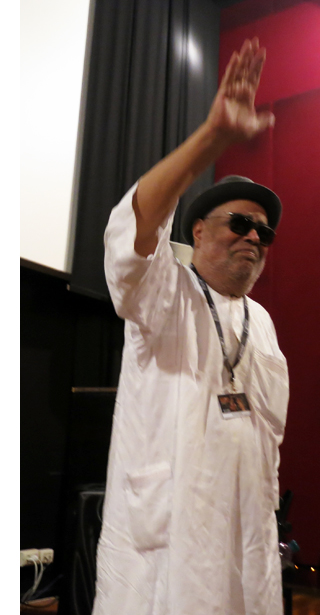 My first thought is, why do such recent films need restoration? Answer: maybe they’re not as recent as they seem to me. My second thought is, haven’t the studios realized that they need to take care of their films? Answer: Yes, to some extent, given the vital work done by studio archivists like Grover Crisp and Shawn Belston. Still, will There Will Be Blood be neglected until it needs restoration in twenty years’ time?
My first thought is, why do such recent films need restoration? Answer: maybe they’re not as recent as they seem to me. My second thought is, haven’t the studios realized that they need to take care of their films? Answer: Yes, to some extent, given the vital work done by studio archivists like Grover Crisp and Shawn Belston. Still, will There Will Be Blood be neglected until it needs restoration in twenty years’ time?
Among the relatively recent films presented in restoration here is Med Hondo’s West Indies (1979). The Film Foundation’s World Cinema Project undertook to restore a number of films by Hondo, a Mauritanian actor and director and one of the most important directors from the African continent.
West Indies is a remarkable film, a musical on the history of French slave-owning in its Caribbean colonies. Inside an empty factory Hondo built a large set depicting the upper and lower decks of a slave ship. The various sections of this ship provide stages upon which scenes, anything from a 1968 demonstration in the streets of Paris to a slave auction hundreds of years before. Five actors representing colonial interests, including a black man who cooperates in order to maintain his position as a figurehead governor, take similar roles throughout the action.
It’s a lively, entertaining film, done in color and widescreen, as well as a maddening look at French complacency and casual cruelty. Most of the musical numbers are dances rather than songs, with Hondo himself having choreographed several of them.
Hondo, now 81 and reportedly seeking backing for another film, was present at the festival and introduced the screening of West Indies that we attended. He was visibly moved by the chance to show this little-known work to an appreciative audience and thoroughly won us over during his brief presentation. With luck we will see a tenth film from him.
Thanks to Guy Borlée for his assistance with this blog, and to the programmers and staff of Ritrovato for another dazzling year. You can download the entire festival catalogue here.
Kelley Conway reviewed Visages Villages at Cannes for our blog.
Le coupable (1917)












